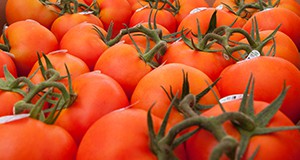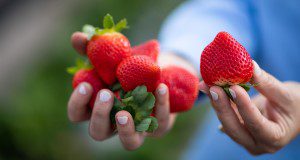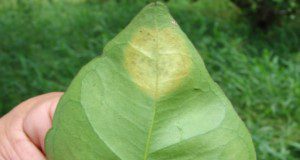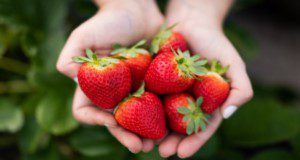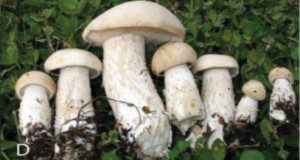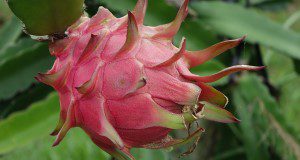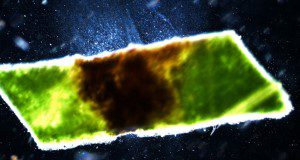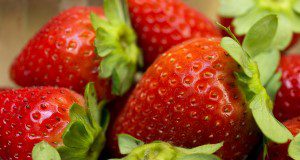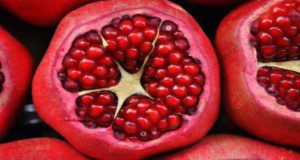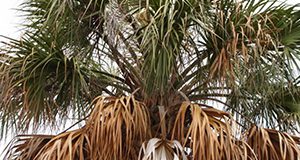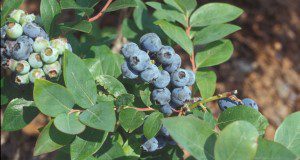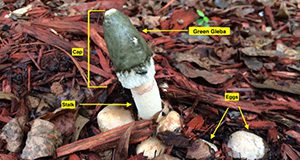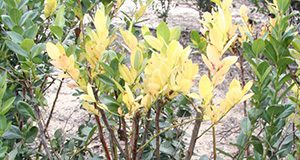Bacterial spot, caused by three species of Xanthomonas, is a limiting disease problem on all peppers. This new 4-page fact sheet provides information on symptoms, causal organism and host resistance, disease cycle and epidemiology, and disease management (including cultural and sanitation practices, chemical control measures and the use of Actigard in chile peppers). Written by Camille McAvoy, Pamela Roberts, and Jeffrey Jones, and published by the UF/IFAS Plant Pathology Department.
https://edis.ifas.ufl.edu/pp362
Tag: Plant Pathology Department
Bird’s Nest Fungi: Charismatic Mushrooms in Your Garden
The “bird’s nest” fungi (Nidulariaceae) are charismatic mushrooms that look like small nests containing multiple tiny eggs. Because the ecological role of bird’s nest fungi is to decompose wood, they are extremely common in disturbed areas with plant debris and mulch, such as trails and backyard gardens. These fungi tend to grow in large clusters, so it is common to see ten to a hundred of these “nests” at once. Bird’s nest fungi are not considered dangerous to plants, animals, or humans. This new 3-page publication of the UF/IFAS Plant Pathology Department was written by Nattapol Kraisitudomsook and Matthew E. Smith.
https://edis.ifas.ufl.edu/pp361
Tomato Brown Rugose Fruit Virus (ToBRFV): A Potential Threat for Tomato Production in Florida
Tobamoviruses are mechanically transmitted plant viruses that cause severe economic damage to vegetable and ornamental crops in Florida and worldwide. While certain tomato cultivars have genetic resistance to the most common tobamoviruses, no commercial tomato cultivars are resistant to tomato brown rugose fruit virus (ToBRFV), a recently described tobamovirus that also infects pepper and eggplant. It is currently unknown how ToBRFV may affect tomato production in Florida. This new 5-page publication of the UF/IFAS Plant Pathology Department describes symptoms of the virus, how it is different from other tobamoviruses, and how it is transmitted, as well as what to do if you think you have ToBRFV in your field. Written by Ozgur Batuman, Salih Yilmaz, Pamela Roberts, Eugene McAvoy, Samuel Hutton, Kishore Dey, and Scott Adkins.
https://edis.ifas.ufl.edu/pp360
Leaf Spot Diseases of Strawberry
Several different fungi and one bacterium cause leaf spot diseases of Florida strawberry. Symptoms caused by these pathogens are often similar, leading to confusion and misdiagnosis of the disease. To facilitate diagnosis, the most common leaf spots diseases of strawberry in Florida are described in this new 6-page article, written by Juliana S. Baggio, James C. Mertely, and Natalia A. Peres, and published by the UF/IFAS Plant Pathology Department.
https://edis.ifas.ufl.edu/pp359
Chicken of the Woods (Laetiporus sulphureus species complex)
Species in the Laetiporus sulphureus species complex, also known as “chicken of the woods” mushrooms, are wood-decay fungi that cause brown rot within the heartwood of their tree hosts. The common name “chicken of the woods” is given to some species in this group because they are tasty edible mushrooms. Several Laetiporus species have been harvested to use as food colorants, to dye natural products such as wool, and for human consumption. This new 4-page publication of the UF/IFAS Plant Pathology Department, written by Brianna Benitez, Claudia A. Paez, Matthew E. Smith, and Jason A. Smith, describes these fungi as well as their ecology, management, and potential edibility.
https://edis.ifas.ufl.edu/pp358
Citrus Diseases Exotic to Florida: Citrus Leprosis
This article is one in a series designed to provide important information on the causal agent, symptoms, and transmission of exotic citrus diseases. Disseminating the information about the diseases to the citrus industry may prevent their introduction and spread in Florida. This 5-page document will focus on the exotic viral disease citrus leprosis. This is a major revision of an article originally published in 2006. Written by O. Batuman, A. Levy, P. Sieburth, A. M. Paolillo, K.-R. Chung, and R. H. Brlansky, and published by the UF/IFAS Plant Pathology Department.
https://edis.ifas.ufl.edu/pp148
Pestalotia Leaf Spot and Fruit Rot of Strawberry
Pestalotiopsis-like fungi cause diseases on many different species of plants worldwide, including strawberry. The pathogen is not necessarily new to strawberry and was first reported causing fruit rot in Florida and Israel in the 1970s. However, during the 2018–19 and 2019–20 strawberry seasons, severe and unprecedented outbreaks were reported in Florida, characterized by symptoms on nearly all plant parts including roots, crowns, petioles, fruit, and leaves. This new 4-page publication of the UF/IFAS Plant Pathology Department describes the disease and its causal agent and briefly covers what is known about disease development and control practices. This document will provide valuable information to strawberry nursery and fruit production growers. Written by Juliana S. Baggio and Natalia A. Peres.
https://edis.ifas.ufl.edu/pp357
Common Strawberry Diseases in Florida
This new two-page publication of the UF/IFAS Plant Pathology Department describes symptoms of most common strawberry diseases in Florida and summarizes the efficacy of fungicides labeled for management of such diseases. Written by Michelle S. Oliveira and Natalia A. Peres.
https://edis.ifas.ufl.edu/pp354
Macrocybe titans: The Mushroom Giant of the Western Hemisphere
The aptly named Macrocybe titans, meaning “giant head,” is the largest known gilled mushroom in the Western Hemisphere. This species was originally described from Florida but can be found across the southeastern United States as well as the Caribbean, Central America, and parts of South America. These mushrooms are often found in clusters with the caps growing as large as 3 ft wide and 1–1.5 ft tall! This species was first discovered in Gainesville, Florida, and is generally found near buildings or roads. This new three-page publication of the UF/IFAS Plant Pathology Department describes these giant mushrooms, their discovery, and where to find them. Written by Elena Karlsen-Ayala and Matthew E. Smith.
https://edis.ifas.ufl.edu/pp356
Stem and Fruit Canker of Dragon Fruit in South Florida
Dragon fruit, also known as pitahaya, pitaya, and strawberry pear, is a group of vine-like, climbing cacti. In south Florida, production of dragon fruit has been steadily increasing since the 2000s, and growers in Florida consider dragon fruit as a potential alternative fruit crop to avocado and citrus, two economically important fruit crops largely impacted by laurel wilt and huanglongbing, respectively. This new 4-page article focuses on the symptomology and epidemiology of stem and fruit canker, a prevailing disease on dragon fruit. Suggested management strategies for the disease are also discussed based on recent studies conducted in south Florida. Written by Cheng-Fang Hong, Shouan Zhang, Romina Gazis, Jonathan H. Crane, and Jeff Wasielewski, and published by the UF/IFAS Plant Pathology Department.
https://edis.ifas.ufl.edu/pp355
Integrated Management of Bacterial Spot on Tomato in Florida
Bacterial spot is one of the most detrimental diseases of tomato and is especially severe in the southeast United States when weather conditions (high temperature, high humidity, and rain) become conducive for disease development. This new 8-page publication of the UF/IFAS Plant Pathology Department presents updated information about the causal pathogen and management of bacterial spot on tomato in Florida. Written by Amanda Strayer-Scherer, Ying-Yu Liao, Peter Abrahamian, Sujan Timilsina, Mathews Paret, Tim Momol, Jeff Jones, and Gary Vallad.
https://edis.ifas.ufl.edu/pp353
Phytophthora Crown Rot of Strawberry
This new 3-page article describes Phytophthora crown rot, an important disease in Florida strawberry fields caused mainly by Phytophthora cactorum, and provides some recommendations for cultural and chemical control. Written by Natalia A. Peres and Juliana S. Baggio and published by the UF/IFAS Plant Pathology Department.
https://edis.ifas.ufl.edu/pp350
Fusarium Wilt (Fusarium oxysporum f. sp. niveum) of Watermelon
Fusarium wilt of watermelon is one of the most serious and difficult diseases to manage and occurs in most production regions worldwide. The fungus can be seedborne and has great longevity in the soil, allowing infested soil to also serve as a source of infection. This new 4-page publication of the UF/IFAS Plant Pathology Department signs, symptoms, and the disease cycle of Fusarium wilt and provides recommendations for cultural and chemical management. Written by Pamela Roberts, Nicholas Dufault, Robert Hochmuth, Gary Vallad, and Mathews Paret.
https://edis.ifas.ufl.edu/pp352
Diseases of Pomegranate (Punica granatum) in Florida
Pomegranate production is becoming increasingly popular in the Southeast. Florida’s humid subtropical to tropical climate is favorable for not only pomegranate tree establishment, but also several diseases. This new 5-page publication of the UF/IFAS Plant Pathology Department, written by Katia V. Xavier, Achala N. KC, and Gary E. Vallad, describes the various diseases affecting pomegranate in Florida and provides some management recommendations.
https://edis.ifas.ufl.edu/pp349
Lethal Bronzing Disease (LBD)
Lethal bronzing disease (LBD), formerly Texas Phoenix Palm Decline (TPPD), is a lethal phytoplasma infection of various palm species in the state of Florida. It was first detected in Florida in 2006 and has since spread to 31 different counties and been isolated from 16 different species of palm. This three-page fact sheet describes the pathogen and hosts of LBD, its symptoms, how to diagnose it, and disease management practices. Written by Brian W. Bahder and Ericka Helmick and published by the UF/IFAS Plant Pathology Department, this article is a revision of an earlier fact sheet by Nigel A. Harrison and Monica L. Elliott.
https://edis.ifas.ufl.edu/pp163
Florida Blueberry Leaf Disease Guide
Southern highbush blueberry (SHB) cultivars are commercially grown throughout much of Florida, in both deciduous and evergreen production systems. In both systems, leaves can be damaged by many factors including environmental conditions, chemical applications, insects, and diseases. This new 12-page publication of the UF/IFAS Plant Pathology Department includes basic information to assist growers in determining 1) the likely cause (fungal, viral, algal, or bacterial) of leaf symptoms, 2) when specific leaf spots are likely to occur, 3) characteristic symptoms of common leaf problems, and 4) some of the management options that are available. Written by Douglas A. Phillips, Norma C. Flor, and Philip F. Harmon.
http://edis.ifas.ufl.edu/pp348
Botryosphaeria Stem Blight on Southern Highbush Blueberry in Florida
Botryosphaeria stem blight is the most common and damaging fungal vascular disease on southern highbush blueberry in the southern United States, causing stem and cane dieback and reductions in yield. Advanced stages of this disease may cause premature plant death, which results in significant replanting costs for growers. Biotic or abiotic stresses from a variety of sources can make plants more susceptible to infection by stem blight pathogens. This new 5-page publication is intended for Florida blueberry growers to use as a guide in the identification and management of Botryosphaeria stem blight on southern highbush blueberry. Written by Norma C. Flor, Douglas A. Phillips, and Philip F. Harmon and published by the UF/IFAS Plant Pathology Department.
http://edis.ifas.ufl.edu/pp347
Powdery Mildew on Watermelon in Florida
This 3-page document discusses the symptoms and management of powdery mildew, a problematic fungal disease, on watermelon in Florida. Written by Pamela D. Roberts, Mathews Paret, and Nicholas Dufault and published by the UF/IFAS Plant Pathology Department, January 2019.
http://edis.ifas.ufl.edu/pp342
Stinkhorn Mushrooms (Agaricomycetes: Phallales: Phallaceae)
Stinkhorn mushrooms are commonly found in Florida home gardens and along the Gulf Coast, and are known for their offensive, rotting odor. This 5-page document profiles the morphology, ecology, phenolology, toxicology, and treatment of this mushroom. Written by Eleanor Phillips, Jennifer L. Gillett-Kaufman, and Matthew E. Smith and published by the UF/IFAS Plant Pathology Department, December 2018.
http://edis.ifas.ufl.edu/pp345
Algal Stem Blotch in Southern Highbush Blueberry in Florida
Algal stem blotch has become a significant disease on southern highbush blueberries (SHB) in Florida. This 3-page document aims to guide Florida blueberry growers through the identification and management of this disease. Written by Douglas Phillips, Norma Flor, and Phillip Harmon and published by the UF/IFAS Plant Pathology Department, November 2018.
http://edis.ifas.ufl.edu/pp344


